How to grow a cactus from seed – 6 easy, expert-approved steps for succulent success this year
If you love succulents, why not learn how to grow a cactus from seed this year?
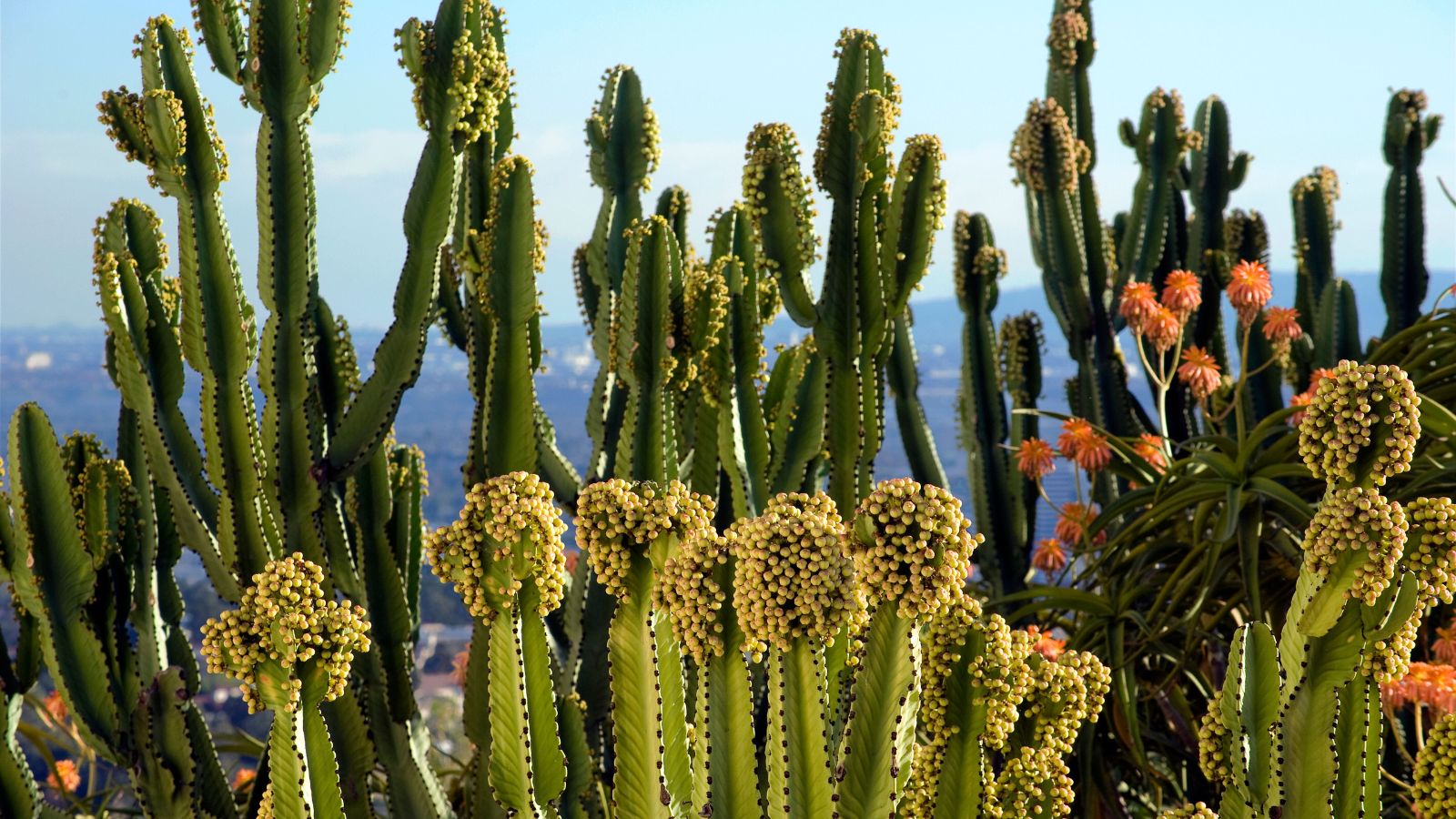

Growing cacti from seed is relatively easy, though it can take anywhere from a few weeks to several months for them to start growing. Since cacti can live for a long time, it’s definitely a worthwhile DIY gardening project and an investment.
If you know how to care for cactus, you'll know that they require specific conditions to grow well. With the right attention, however, they can thrive, becoming low-maintenance, resilient, and long-lasting additions to your garden or home.
We asked experts how to grow a cactus from seed, including tips for indoors or outdoors if you are looking to landscape with cactus and succulents.
How to grow a cactus from seed - what you need
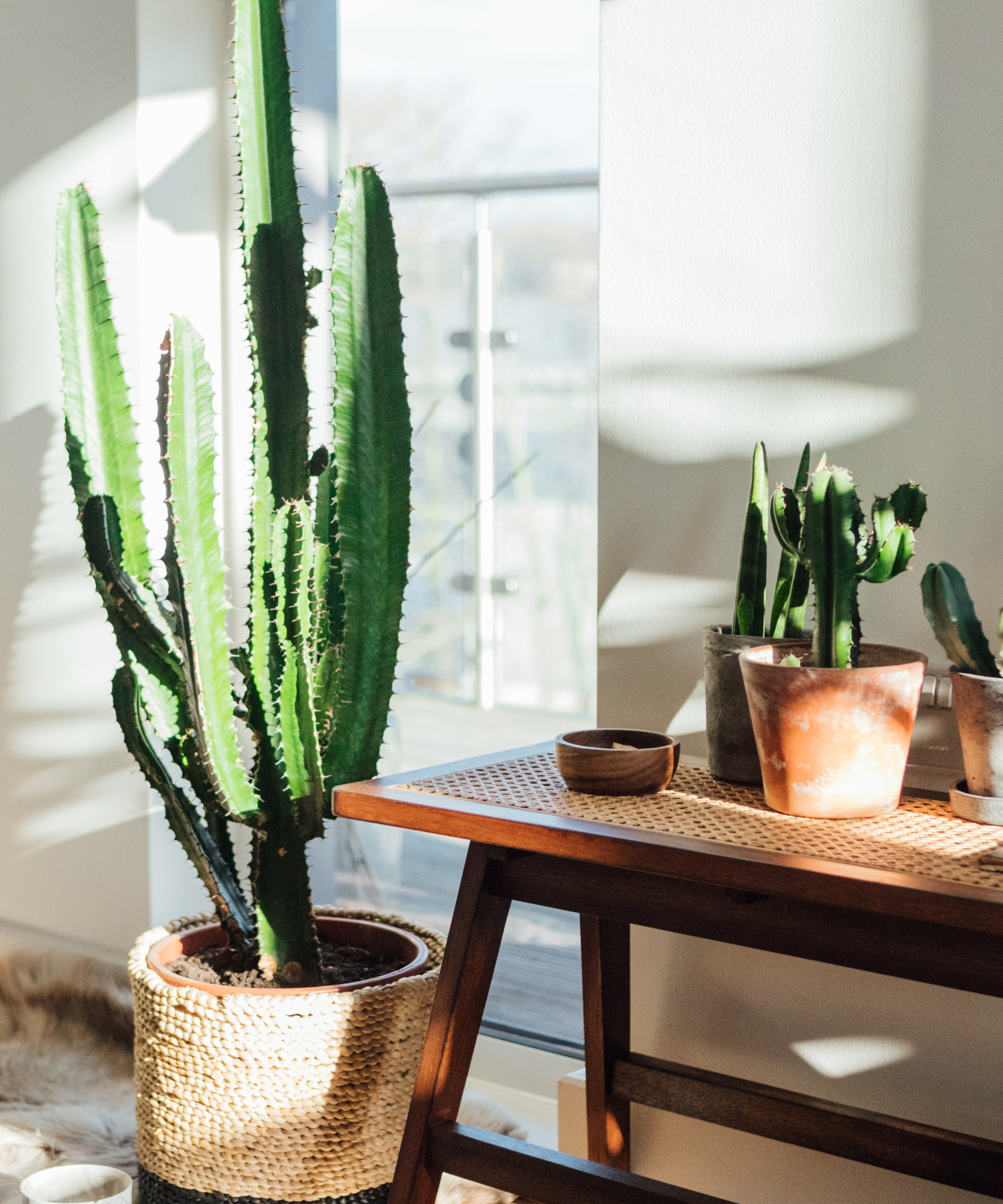
- Cactus seeds: Amazon's mixed cactus seeds will give you variety; make sure to shop 'fresh' seeds, as older seeds mean longer germination times.
- A shallow, wide container or seed tray with a plastic cover and drainage holes: Walmart's KORALAKIRI seed starter tray is highly recommended.
- Cactus potting mix: Amazon's best-selling cactus potting mix helps promote successful growth; or you can make your own cactus potting mix easily.
- Small pebbles, gravel, or pumice for potting: This will help with drainage; Amazon's Horticultural mix is designed for Cacti.
- Seed spray bottle: we like this OFFIDIX glass spray bottle from Amazon.
- A grow light, if you can't house your seedlings in a warm, bright position; Walmart's grow light is a best seller.
- A heat mat will give you better results, helping encourage germination: consider Amazon's VIVOSUN seedling heat mat.
1. Stratifying cactus seeds using cold refrigeration
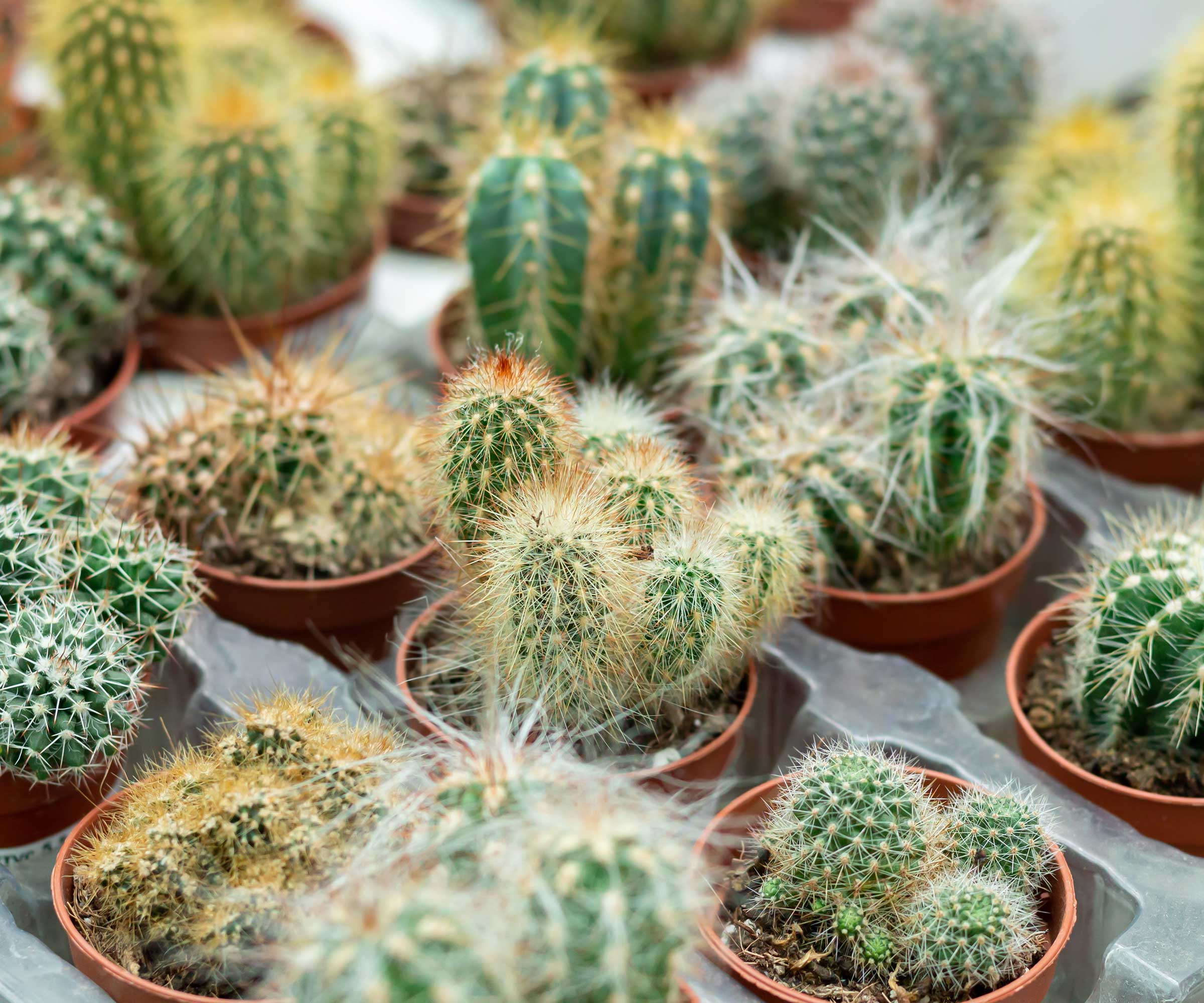
Many cactus seed varieties require a stratification period, which means chilling the seeds to mimic the natural winter conditions they would experience in the wild. This helps trigger germination when exposed to warmer temperatures.
'There are two ways to do this,' explains Laurelynn and Byron Martin, co-owners of Logee’s Plants for Home and Garden.
'One is to take the seeds and put them in moist peat moss and then in a plastic bag, then leave them in the refrigerator for four to six weeks. 'The problem with this method is that afterward, you have to dig the seed out of the peat moss and plant it in a pot.'
They also suggest a more efficient alternative: 'We take a small seed tray or container, fill it with cactus soil, and plant the seed about one seed deep.
'After watering, we cover the container with plastic or a lid and place it in the refrigerator for four to six weeks. This eliminates the need to replant them.'
Once the chilling period is over, the container can be moved to a bright, warm location, still covered but out of direct sunlight. This creates the ideal conditions for germination.
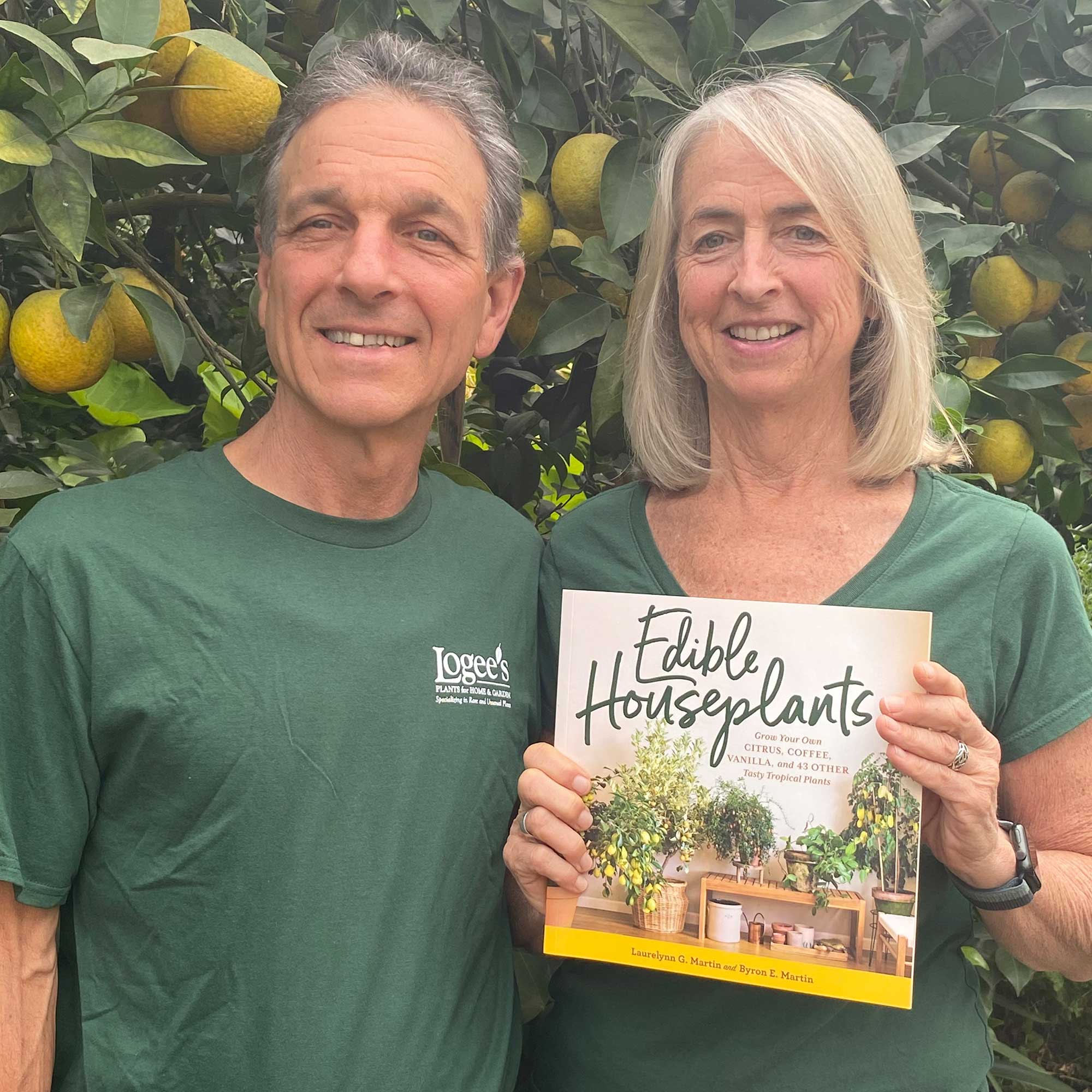
Laurelynn G. Martin and Byron E. Martin are the authors of Edible Houseplants and co-owners of Logee’s Plants for Home and Garden. They are nationally recognized experts in growing tropical container plants.
2. Prep your potting mix

Add a shallow layer of clean small pebbles, gravel or pumice to your sterilized seed tray.
Ensuring your tray and potting ingredients are clean will help you avoid problems, such as fungal growth or rot, as your seedlings start to grow. The layer of pebbles will help with drainage.
Next, add the potting mix to a depth of around 2 inches on top of the pebbles. Any shallower, and the potting mix will dry out too quickly; any deeper and the soil can easily become boggy.
Then, dampen the soil slightly - it should not be boggy, just damp. Don't be tempted to use soil from your yard; cactus seedlings need good airflow to root and grow healthily.
'The cactus mix itself can be made from standard potting soil, or the peat lite or soilless mixes that we use in horticulture and add coarse sand or perlite at 1/3 parts to give better drainage,' explains Laurelynn and Byron Martin.
3. Sow the cactus seeds

Next, sow the cactus seeds over the potting mix, around half an inch apart to give them space to grow.
Don't worry too much if they are closer since you will be repotting your cactus later, but you'll find it easier to move them about with a toothpick or fine, damp paintbrush if you want to reposition them because they are tiny.
Press the cactus seeds down into the soil very gently. They don't need to be buried because they will need daylight to germinate, but you can apply the finest layer of sand or grit over them to help keep moisture levels consistent.
If you are planting more than one variety of cactus, whether in one tray or several, it will be worth labelling them because they will all look the same when they become seedlings but may need slightly different care routines.
Cover with the clear plastic lid or Saran Wrap, and place the cactus seed tray in a warm, bright position with indirect sunlight.
The ideal temperature for germination will be around 68°F to 86°F; if you can't provide this, a heat map will be useful.
4. Water carefully
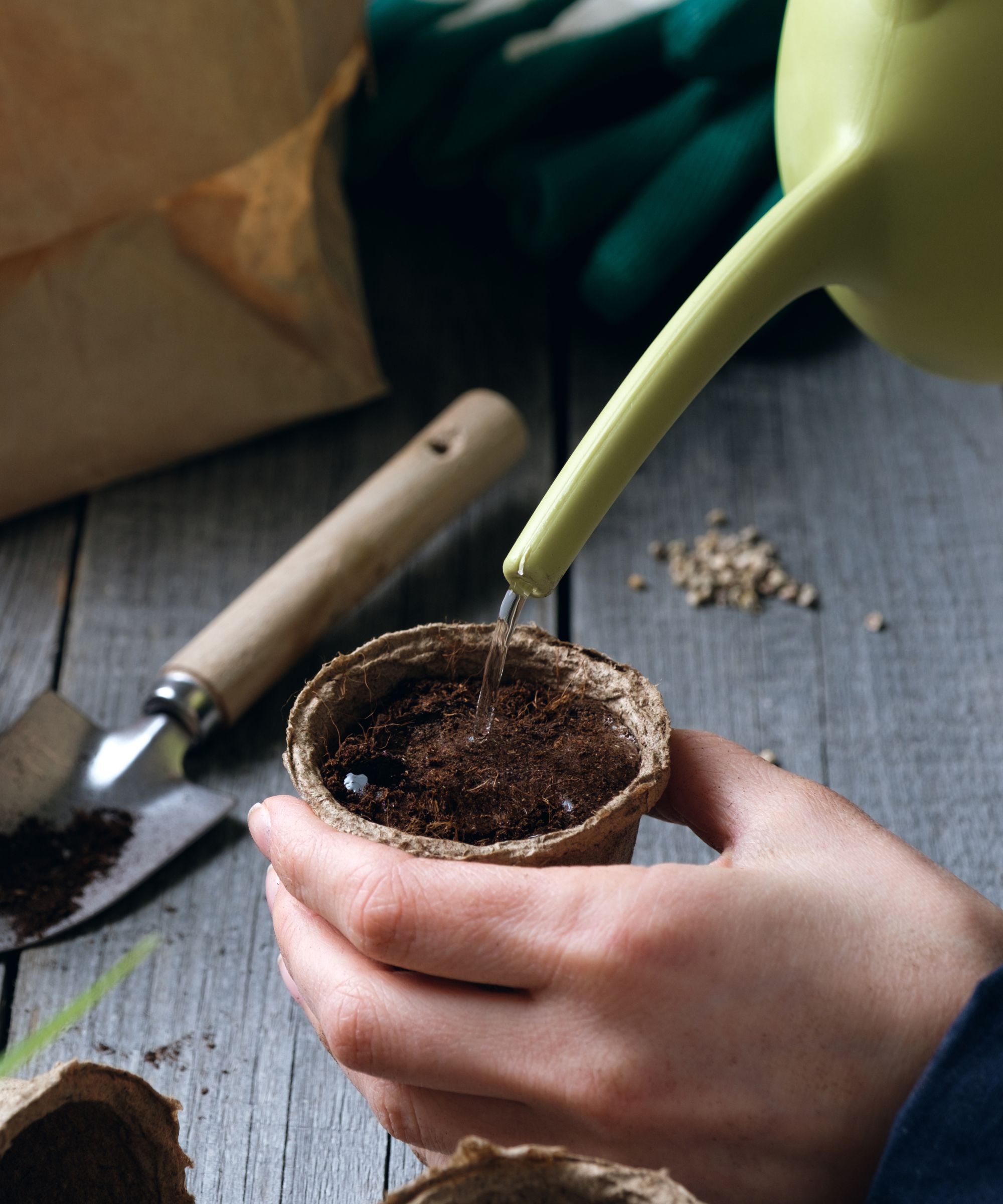
Just as when you're growing cactus from cuttings, how you water cactus is key to the success of your seedlings.
Keeping the surface of the soil damp is best done with a spray bottle, not a watering can; this will ensure you never wet or waterlog the potting mix.
Another option is to bottom-water cactus seedlings by placing the cactus seed tray in a larger shallow tray of water for 15 minutes every time the soil has dried right out.
However, this is much more difficult to get right and may mean you have to drain excess water from the cactus seed tray afterward.
My advice? Use misting for easier application and more success.
5. Keep a close eye on germination
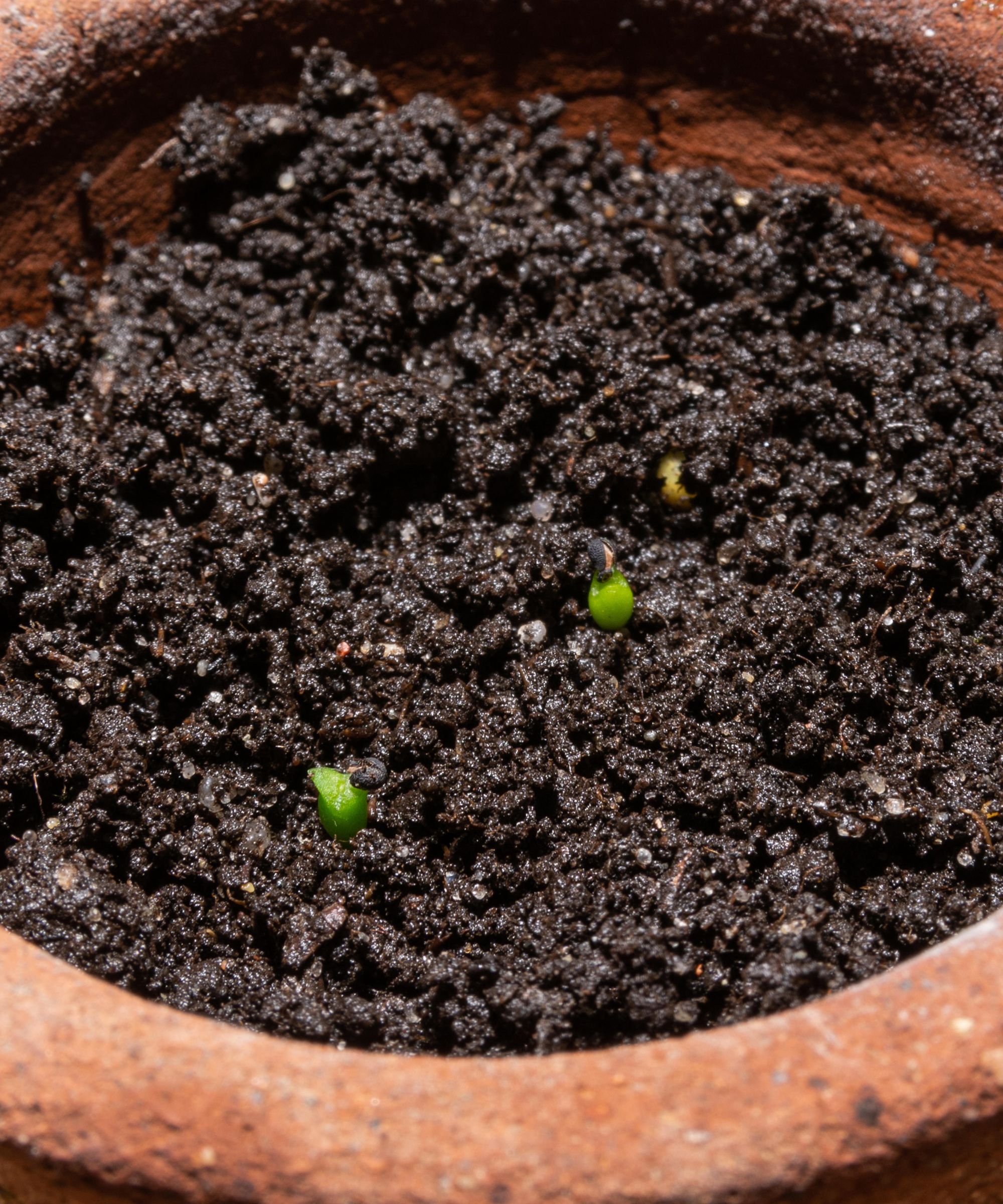
Cactus seeds tend to start to germinate (in perfect conditions) within either a week or two or in a few months, depending on the cactus variety you have chosen to grow (do check before you buy to avoid disappointment!).
Laurelynn Martin: 'Once the seed has been chilled, it can be taken out and left covered with plastic in a bright spot, but not in direct sunlight.
The temperature should be above 65° for three or four weeks. Germination will take place during that time, and then the cover can be taken off, and the plants allowed to grow in a bright spot even some morning or afternoon sun for a few months, after which they can be transplanted into their own pots.'
Once cactus seedlings start to grow, remove your plastic cover, keeping them humid at first. Then, as they start to mature, slowly adjust the misting down.
Don't be tempted to move your seedlings into direct sunlight yet. They will still be sensitive to the light and heat and are easily killed.
6. Pot up cactus seedlings

Once your cactus seedlings are large enough (this takes anywhere up to six months), you can repot them into their own containers and adjust the care routine to your individual cactus' needs.
FAQs
Which cactus seeds are easiest to grow?
The easiest cactus varieties to grow from seed include:
Mammillaria, a plump, fast-growing variety that germinates in a couple of weeks, and has pretty pink or white flowers when mature.
Astrophytum, a star-shaped variety that germinates in anywhere between a week and a month, and which grows large, yellow flowers and a speckled body when mature.
Echinopsis, a globe-shaped or column-shaped cactus that is fast-growing (germinating within a week or so), and which has a ton of colorful flowers when mature.
Gymnocalycium, an easy-to-care-for, ribbed cactus with pink, white or red flowers when mature. It germinates within a couple of weeks.
Ferocactus, a ribbed, spiny, barrel-shaped cactus that is slow-growing but long-lived. It germinates usually within a couple of weeks, but may take over a month.
What are the environmental requirements for growing a cactus?
While cacti are famously low-maintenance, their success starts with where – and how – they’re placed. Cacti naturally thrive in hot, dry conditions, so recreating that at home is essential. This means prioritising warmth, airflow, and especially sunlight.
As building specialist Andy Simms from MyBuilder points out, when designing a space for plant growth, even small architectural considerations – like window placement, insulation, and airflow – can make a big difference.
At the seedling stage, too much direct sunlight can actually harm them, causing the soil to dry too quickly or even burning the delicate sprouts before they’ve had a chance to establish.
As they grow and become more resilient (after a few weeks to months, depending on the species), you can gradually introduce them to stronger sunlight.

With over a decade of experience on the front line in construction as a multi-trader, Andy is uniquely placed in the construction industry to help bridge the gap between tradespeople and product managers with his role at MyBuilder.
While cactus seeds can last for years, making them a great option for long-term planting, be aware that their germination rate drops the older they get.
Fresh seeds often sprout within a few weeks, while older ones can take months – if they sprout at all. For the easiest growing and best results, try to sow seeds that are less than one to two years old.
For more indoor plant inspiration, see our guide on how to grow succulent styling ideas, to keep your cacti collection looking impressive this year.
Design expertise in your inbox – from inspiring decorating ideas and beautiful celebrity homes to practical gardening advice and shopping round-ups.

Lola Houlton is a news writer for Homes & Gardens. She has been writing content for Future PLC for the past six years, in particular Homes & Gardens, Real Homes and GardeningEtc. She writes on a broad range of subjects, including practical household advice, recipe articles, and product reviews, working closely with experts in their fields to cover everything from heating to home organization through to house plants. Lola is a graduate, who completed her degree in Psychology at the University of Sussex. She has also spent some time working at the BBC.
You must confirm your public display name before commenting
Please logout and then login again, you will then be prompted to enter your display name.